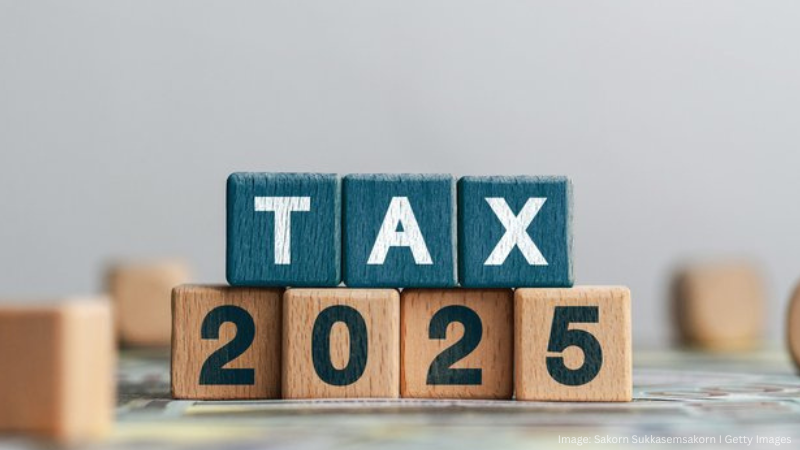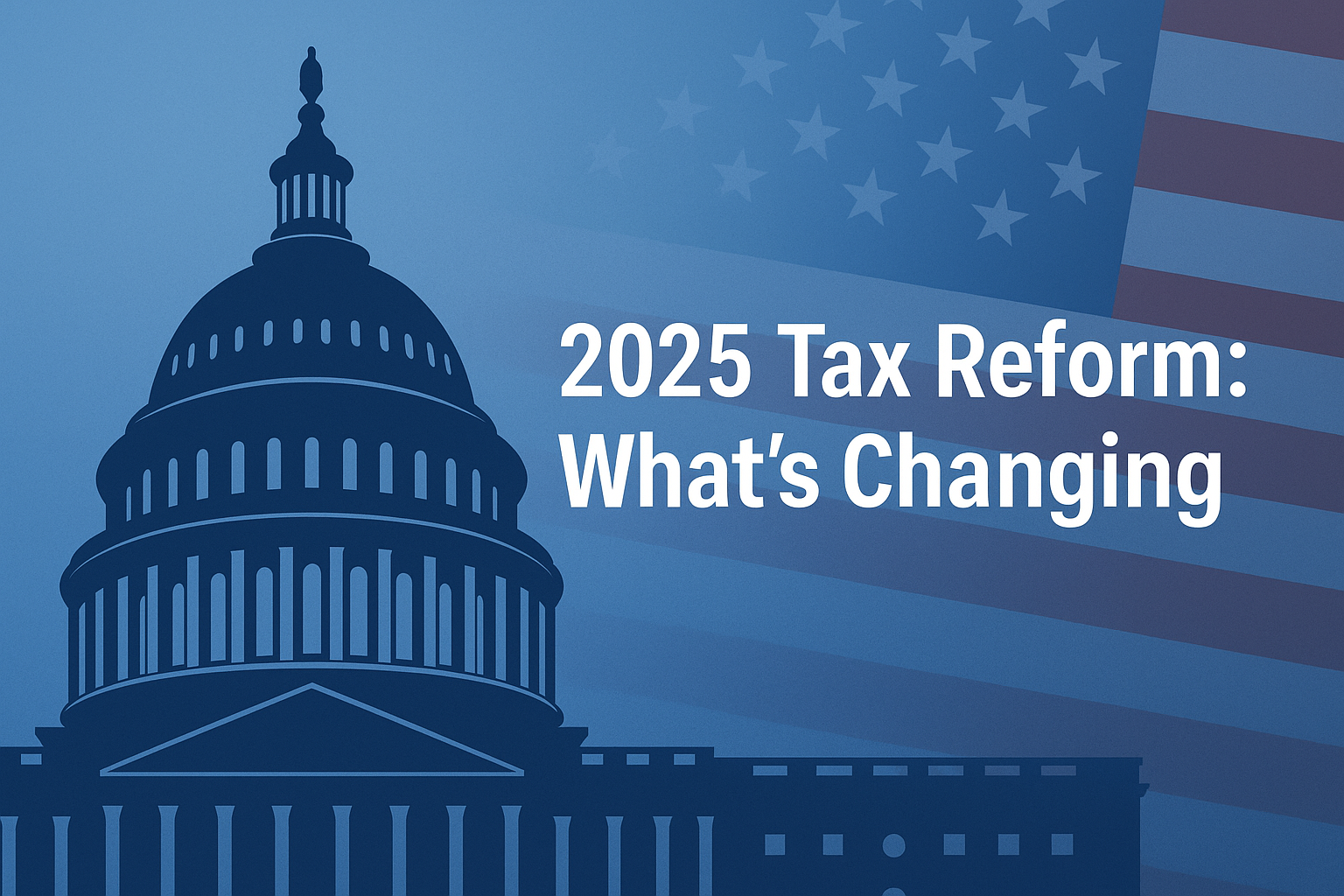The U.S. House of Representatives passed its sweeping tax and spending bill, dubbed The One, Big, Beautiful Bill Act (OBBBA), by a vote of 215 to 214. The bill includes extensions of many provisions of the Tax Cuts and Jobs Act (TCJA) that are set to expire on December 31. It also includes some new and enhanced tax breaks. For example, it contains President Trump’s pledge to exempt tips and overtime from income tax.
The bill has now moved to the U.S. Senate for debate, revisions and a vote. Several senators say they can’t support the bill as written and vow to make changes.

Here’s an overview of the major tax proposals included in the House OBBBA.
Business tax provisions
The bill includes several changes that could affect businesses’ tax bills. Among the most notable:
Bonus depreciation. Under the TCJA, first-year bonus depreciation has been phasing down 20 percentage points annually since 2023 and is set to drop to 0% in 2027. (It’s 40% for 2025.) Under the OBBBA, the depreciation deduction would reset to 100% for eligible property acquired and placed in service after January 19, 2025, and before January 1, 2030.
Section 199A qualified business income (QBI) deduction. Created by the TCJA, the QBI deduction is currently available through 2025 to owners of pass-through entities — such as S corporations, partnerships and limited liability companies (LLCs) — as well as to sole proprietors and self-employed individuals. QBI is defined as the net amount of qualified items of income, gain, deduction and loss that are effectively connected with the conduct of a U.S. business. The deduction generally equals 20% of QBI, not to exceed 20% of taxable income. But it’s subject to additional rules and limits that can reduce or eliminate the tax benefit. Under the OBBBA, the deduction would be made permanent. Additionally, the deduction amount would increase to 23% for tax years beginning after 2025.
Domestic research and experimental expenditures. The OBBBA would reinstate a deduction available to businesses that conduct research and experimentation. Specifically, the deduction would apply to research and development costs incurred after 2024 and before 2030. Providing added flexibility, the bill would allow taxpayers to elect whether to deduct or amortize the expenditures. (The requirement under current law to amortize such expenses would be suspended while the deduction is available.)
Section 179 expensing election. This tax break allows businesses to currently deduct (rather than depreciate over a number of years) the cost of purchasing eligible new or used assets, such as equipment, furniture, off-the-shelf computer software and qualified improvement property. An annual expensing limit applies, which begins to phase out dollar-for-dollar when asset acquisitions for the year exceed the Sec. 179 phaseout threshold. (Both amounts are adjusted annually for inflation.) The OBBBA would increase the expensing limit to $2.5 million and the phaseout threshold to $4 million for property placed into service after 2024. The amounts would continue to be adjusted annually for inflation. (Under current law, for 2025, the expensing limit is $1.25 million and the phaseout threshold is $3.13 million.)
Pass-through entity “excess” business losses. The Inflation Reduction Act, through 2028, limits deductions for current-year business losses incurred by noncorporate taxpayers. Such losses generally can offset a taxpayer’s income from other sources, such as salary, interest, dividends and capital gains, only up to an annual limit. “Excess” losses are carried forward to later tax years and can then be deducted under net operating loss rules. The OBBBA would make the excess business loss limitation permanent.
Individual tax provisions
The OBBBA would extend or make permanent many individual tax provisions of the TCJA. Among other things, the new bill would affect:
Individual income tax rates. The OBBBA would make permanent the TCJA income tax rates, including the 37% top individual income tax rate. If a new law isn’t enacted, the top rate would return to 39.6%.
Itemized deduction limitation. The bill would make permanent the repeal of the Pease limitation on itemized deductions. But it would impose a new limitation on itemized deductions for taxpayers in the 37% income tax bracket that would go into effect after 2025.
Standard deduction. The new bill would temporarily boost standard deduction amounts. For tax years 2025 through 2028, the amounts would increase $2,000 for married couples filing jointly, $1,500 for heads of households and $1,000 for single filers. For seniors age 65 or older who meet certain income limits, an additional standard deduction of $4,000 would be available for those years. (Currently, the inflation-adjusted standard deduction amounts for 2025 are $30,000 for joint filers, $22,500 for heads of households and $15,000 for singles.)
Child Tax Credit (CTC). Under current law, the $2,000 per child CTC is set to drop to $1,000 after 2025. The income phaseout thresholds will also be significantly lower. And the requirement to provide the child’s Social Security number (SSN) will be eliminated. The OBBBA would make the CTC permanent, raise it to $2,500 per child for tax years 2025 through 2028 and retain the higher income phaseout thresholds. It would also preserve the requirement to provide a child’s SSN and expand it to require an SSN for the taxpayer (generally the parent) claiming the credit. After 2028, the CTC would return to $2,000 and be adjusted annually for inflation.
State and local tax (SALT) deduction. The OBBBA would increase the TCJA’s SALT deduction cap (which is currently set to expire after 2025) from $10,000 to $40,000 for 2025. The limitation would phase out for taxpayers with incomes over $500,000. After 2025, the cap would increase by 1% annually through 2033.
Miscellaneous itemized deductions. Through 2025, the TCJA suspended deductions subject to the 2% of adjusted gross income (AGI) floor, such as certain professional fees and unreimbursed employee business expenses. This means, for example, that employees can’t deduct their home office expenses. The OBBBA would make the suspension permanent.
Federal gift and estate tax exemption. Beginning in 2026, the bill would increase the federal gift and estate tax exemption to $15 million. This amount would be permanent but annually adjusted for inflation. (For 2025, the exemption amount is $13.99 million.)
New tax provisions
On the campaign trail, President Trump proposed several tax-related ideas. The OBBBA would introduce a few of them into the U.S. tax code:
No tax on tips. The OBBBA would offer a deduction from income for amounts a taxpayer receives from tips. Tipped workers wouldn’t be required to itemize deductions to claim the deduction. However, they’d need a valid SSN to claim it. The deduction would expire after 2028. (Note: The Senate recently passed a separate no-income-tax-on-tips bill that has different rules. To be enacted, the bill would have to pass the House and be signed by President Trump.)
No tax on overtime. The OBBBA would allow workers to claim a deduction for overtime pay they receive. Like the deduction for tip income, taxpayers wouldn’t have to itemize deductions to claim the write-off but would be required to provide an SSN. Also, the deduction would expire after 2028.
Car loan interest deduction. The bill would allow taxpayers to deduct interest payments (up to $10,000) on car loans for 2025 through 2028. Final assembly of the vehicles must take place in the United States, and there would be income limits to claim the deduction. Both itemizers and nonitemizers would be able to benefit.
Charitable deduction for nonitemizers. Currently, taxpayers can claim a deduction for charitable contributions only if they itemize on their tax returns. The bill would create a charitable deduction of $150 for single filers and $300 for joint filers for nonitemizers.
What’s next?
These are only some of the provisions in the massive House bill. The proposed legislation is likely to change (perhaps significantly) as it moves through the Senate and possibly back to the House. In addition to disagreements about the tax provisions, there are Senators who don’t agree with some of the spending cuts. Regardless, tax changes are expected this year. Turn to us for the latest developments.
Stay Informed
As the legislative process unfolds, we’ll continue to monitor the latest developments. Subscribe to our newsletter or contact us directly to see how potential changes may impact your personal or business tax situation.
© 2025









